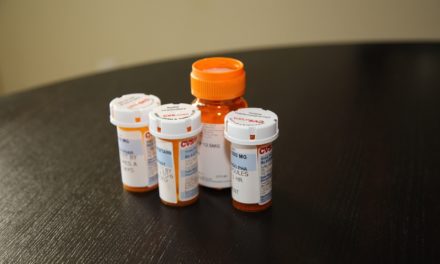(Editor’s note: This opinion column first appeared in The Hill on Jan 18. Given the gravity of the opioid epidemic in the country and the Coachella Valley, Uken Report sought permission to reprint it here. It was co-authored by former congressional members Mary Bono and Patrick J. Kennedy.)
If nearly 175 Americans died from a preventable disaster each day, public outcry would force immediate government action. Congress and the White House would make whatever policy changes were necessary, and provide the proper funding to identify solutions.
That is not the case for our country’s greatest public health crisis since the HIV/AIDS epidemic. More than 175 Americans die daily from drug overdoses, but our national response seems to be focused on “thoughts and prayers.”
Despite thorough recommendationsmade by The President’s Commission on Combating Drug Addiction and the Opioid Crisis, the death toll continues to rise. When Hurricane Harvey hit in August 2017, Congress and the administration quickly provided $15 billion plus supplemental funding in the weeks to follow. Yet, they pretend that $1 billion over two years is enough to combat the opioid crisis, when reasonable estimates call for no less than $15 billion annually.
We need to change real policies and provide real funding for recovery efforts. Recent negotiations over a long-term spending deal provide an opportunity to right this wrong. Much of the dialogue has revolved around the Deferred Action for Childhood Arrivals Program and matching defense spending increases with domestic increases, but there is no reason the nation’s most dire public health threat should be off the table in the discussions.
Improving access to medication-assisted treatment (MAT) is a logical step in moving from words to action. Evidence shows MAT can cut the all-cause mortality rate among addiction patients by half or more, and results in improved health and functioning. Unfortunately, Medicare — and to a lesser extent, Medicaid — prevent patients from receiving MAT by not covering the necessary medications. Clinicians should not be hindered by outdated government policies when it comes to making evidence-based treatment decisions to best serve their patients.
According to a recent study in Health Affairs, of the more than 12,000 substance abuse facilities surveyed, only 41 percent offer any type of MAT and less than 3 percent offer methadone, buprenorphine and naltrexone. We urge the Centers for Medicare and Medicaid Services to require state Medicaid programs to cover all three FDA-approved opioid recovery medications. Congress must change federal law so that Medicare can cover methadone for treating opioid use disorder. Stronger health insurance parity enforcement by the U.S. Department of Labor will be critical for ensuring that insurance providers and purchasers actually follow suit.
Revising regulations and reimbursement policies, lifting restrictions on medical management practices, and allowing for substance use disorder treatment via telemedicine also would have immediate impact, particularly in rural areas. In addition, the U.S. Department of Justice must establish drug courts that divert people from the criminal justice system and into treatment programs. Breaking the addiction cycle helps to prevent recidivism and gives people a fighting chance to lead productive lives in their communities.
Congress has made some progress by passing the Comprehensive Addiction and Recovery Act to confront prescription opioid and heroin misuse, abuse and diversion — and the 21st century Cures Act to boost treatment and prevention resources for states. But the intent of these laws must be matched with much greater funding for proven programs and policies. The November 2016 Surgeon General’s Report, “Facing Addiction in America,” indicated that evidence-based interventions can have a benefit of more than $58 for every dollar spent. Other studies showed that every dollar spent on substance use disorder treatment saves $4 in health care costs and $7 in criminal justice costs.
As if the rising death toll weren’t enough to incite real action, recent reports from Altarum and the White House Council of Economic Advisorshighlight the lost productivity and economic impact of the opioid epidemic — hundreds of billions of dollars per year. How much more data do we need to implement and enforce tangible solutions? The opioid epidemic is the greatest public health crisis of our generation, with long-term consequences that will affect everyone. It is up to all of us to supply the public outcry necessary to force immediate government action.







